Another cyclist murdered by the construction industry and the government
It's not just the driver who right-hooked a cyclist in Hamilton; it's the entire system that puts money ahead of lives.
Joey Schwartz is getting ready for another Ghost Bike ride, this time in Hamilton, Ontario. That’s a ready-mix truck behind the police tape just after the driver (who the Spec notes graciously remained on the scene) right-hooked and killed a cyclist. This is not a rare event, and it enrages me every time it happens because it is completely avoidable. Many blame the driver. Others blame the road design. The commenters in the Spec blame the cyclist (what else is new?). But there is lots of blame to spread around here; you have to include the Federal and Provincial Ministries of Transportation, the Ministries of Labour, and the entire construction industry.
The media call the vehicle a cement truck, but cement is a dry powder that is only one ingredient of concrete, which is made to order at a ready-mix batching plant and shipped in a special truck with a rotating drum to keep it from separating and setting. The driver is often in a hurry; there are limits to how long concrete can sit in the truck. According to Concrete Construction:
"ASTM C-94, Specification for Ready-Mixed Concrete, does place a time requirement on delivered concrete. The document states that discharge of the concrete shall be completed within 1 ½ hours after the introduction of the mixing water to the cement and aggregates, or the introduction of the cement to the aggregates."
When they get to the job site, they often have to wait their turn, so every minute on the road counts. Does this make drivers careless? According to the Toronto Star, "A Star analysis of 15 years’ worth of data from 2006 to 2020 shows dump or cement trucks were involved in 11 percent of all pedestrian deaths and more than a quarter of all cyclist deaths." They don’t separate dump trucks from ready-mix trucks, but both have cabs way up in the air looking over massive front ends with terrible visibility. Many drivers fail to do a mirror check when turning right, not anticipating bike lanes, and many trucks have big blind spots.

These are powerful transport trucks designed for the open road that are adapted for ready-mix and are not designed for urban use. The driver is high up and has a long hood to look over. In Europe, it is a different story; the industry is being forced to switch to trucks like the Mercedes Econic, which is designed for maximum visibility, safety, and ergonomics.
“The advantages of the driver's low seating position, supplemented with the extensive panoramic glazing and the mirror system, provide the driver with virtually unrestricted visibility in front of the vehicle and on both sides – a clear advantage in confusing urban traffic with pedestrians and cyclists. In addition, the Econic is easy on drivers and co-drivers. The cab can be reached with just one step. On a busy workday that saves them several metres they don't have to climb up or down.”
There is no discussion of making this kind of truck mandatory in North America. There is no consideration of inward-opening doors so that cyclists don’t get the door prize or of BlueTec diesel engines that reduce particulate emissions by 50% and nitrogen oxide emissions by 90%. That might cost money, and housing is too expensive already!
In most right hooks, the cyclist or pedestrian is drawn under the rear wheels and crushed; this could be mitigated if trucks had side guards, as can be found on every truck from Beijing to Belfast, but not required in North America. I described in an earlier post, It's time to make side guards mandatory on every truck in North America, how Toronto Mayor Olivia Chow tried to change this when she was a Member of Parliament, noting:
“Every year, Canadian cyclists and pedestrians die needlessly when they are sucked under the back wheels of large trucks. Twenty-five years ago in Europe, truck side guards were made mandatory. As a result, cyclist deaths in Britain were cut by 61 percent.”
Successive governments have refused to do this; Canadian authorities say it is an international issue, and American regulators defer to lobbyists who claim that it “would be prohibitively expensive and do lasting damage to the American economy.” The Canadian government also blamed the cities, noting:
“Municipalities also have the responsibility to ensure their infrastructure accommodates for the safe transportation of all road users. For example, it is up to municipalities where to design for bike lanes and wider streets where there is a demonstrated need.”
And here in Hamilton, you have a painted bike lane on a car sewer that is more than wide enough to have physically separated lanes, which peters out before the intersection with James Street N. There is a demonstrated need to fix this intersection.
Usually, the construction industry loves bike lanes! They are so convenient for parking trucks. After cyclists complained about the trucks parked in the bike lane on Bloor Street, a Toronto real estate agent wondered, “Was he really thinking that the condo should not be built so as not to block the bicycle lane? Has this person ever given any thought to the sizable contribution to the gross domestic product one condo building makes; has anyone?”
That’s the quiet part out loud: safety doesn't matter; the GDP does. The reality is that the industry is perfectly capable of making construction sites safe for cyclists and pedestrians; they do this in Copenhagen on every job site.
But expired concrete costs money. Fancy new trucks cost money. Side guards cost money. Temporary bike infrastructure costs money and might slow down drivers. Think of the GDP, the cost of housing, and people in a hurry to get home for dinner!
Look at Dupont Street here, where Tridel takes over the sidewalk but leaves two full lanes for cars- this demonstrates who’s boss in this town. Compare that to Copenhagen.
After years of us saying “driver, not car” many writing about this death are careful to attribute it to the “driver of a cement truck.” But it’s not just the driver. It is the design of the truck, the design of the roads, even the design of buildings that need so much concrete. It’s the entire system.
I am tired of Ghost Bike Memorial Rides, I have been on too many of them. I am tired of the construction industry and the governments that purport to regulate it, putting money ahead of lives.





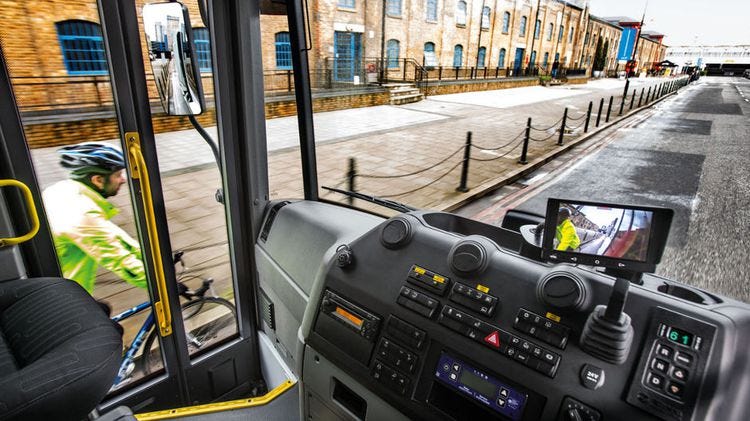

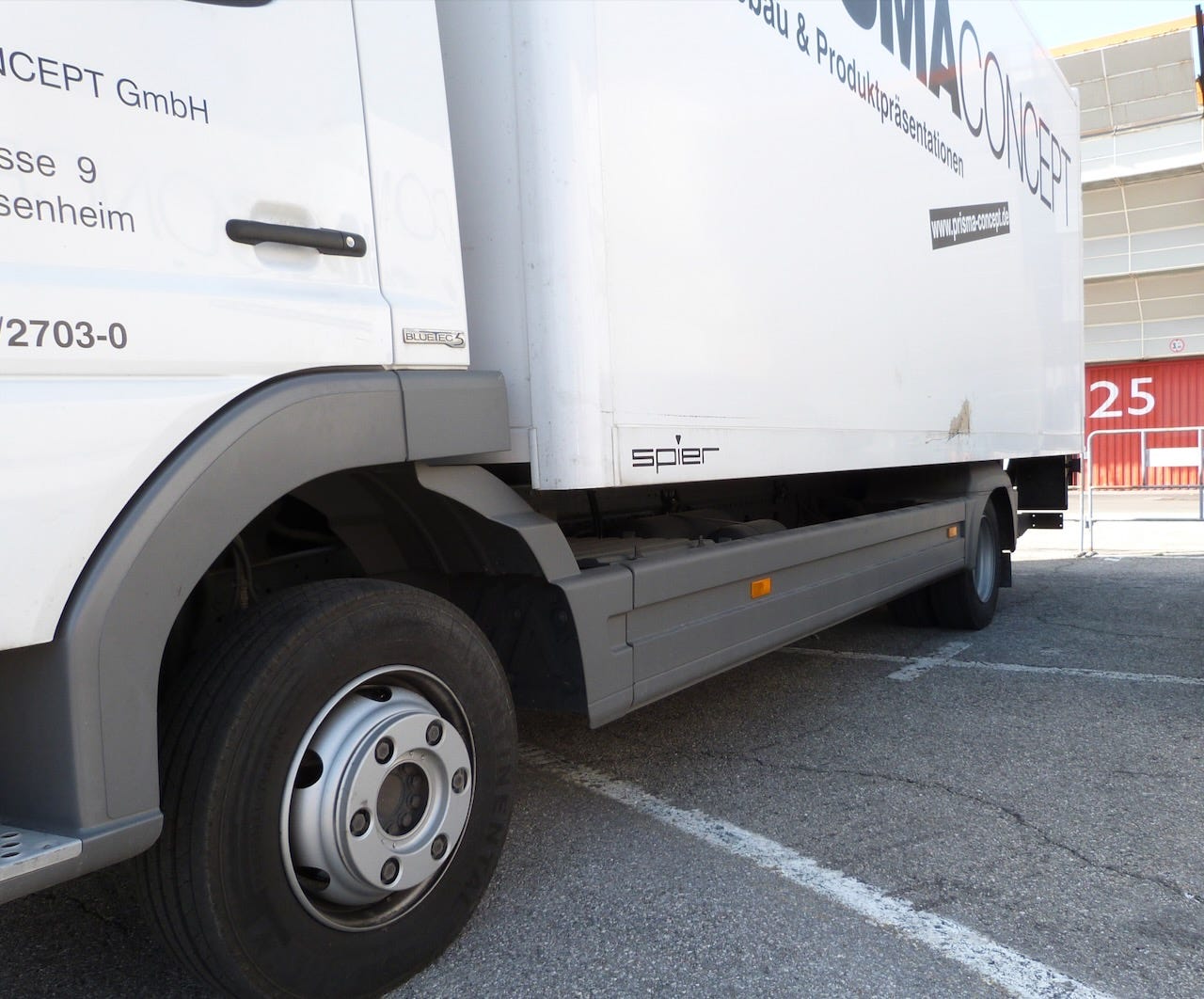

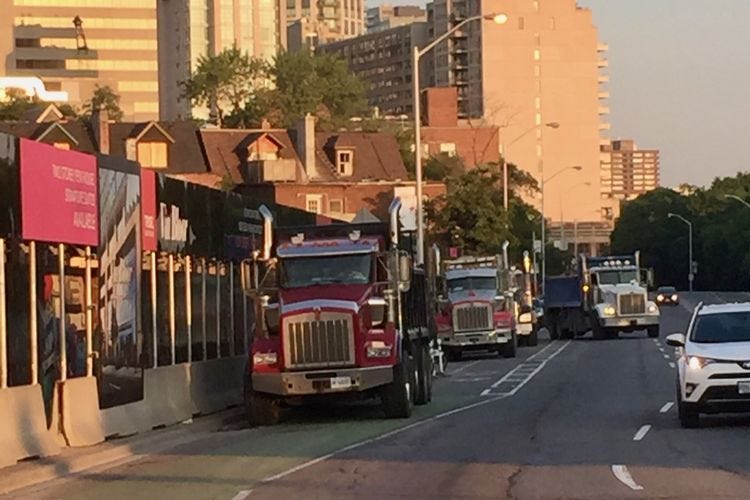
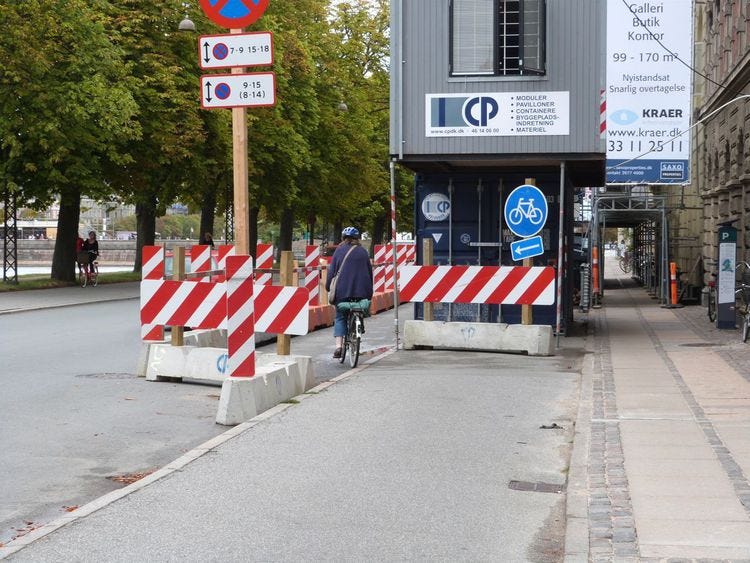

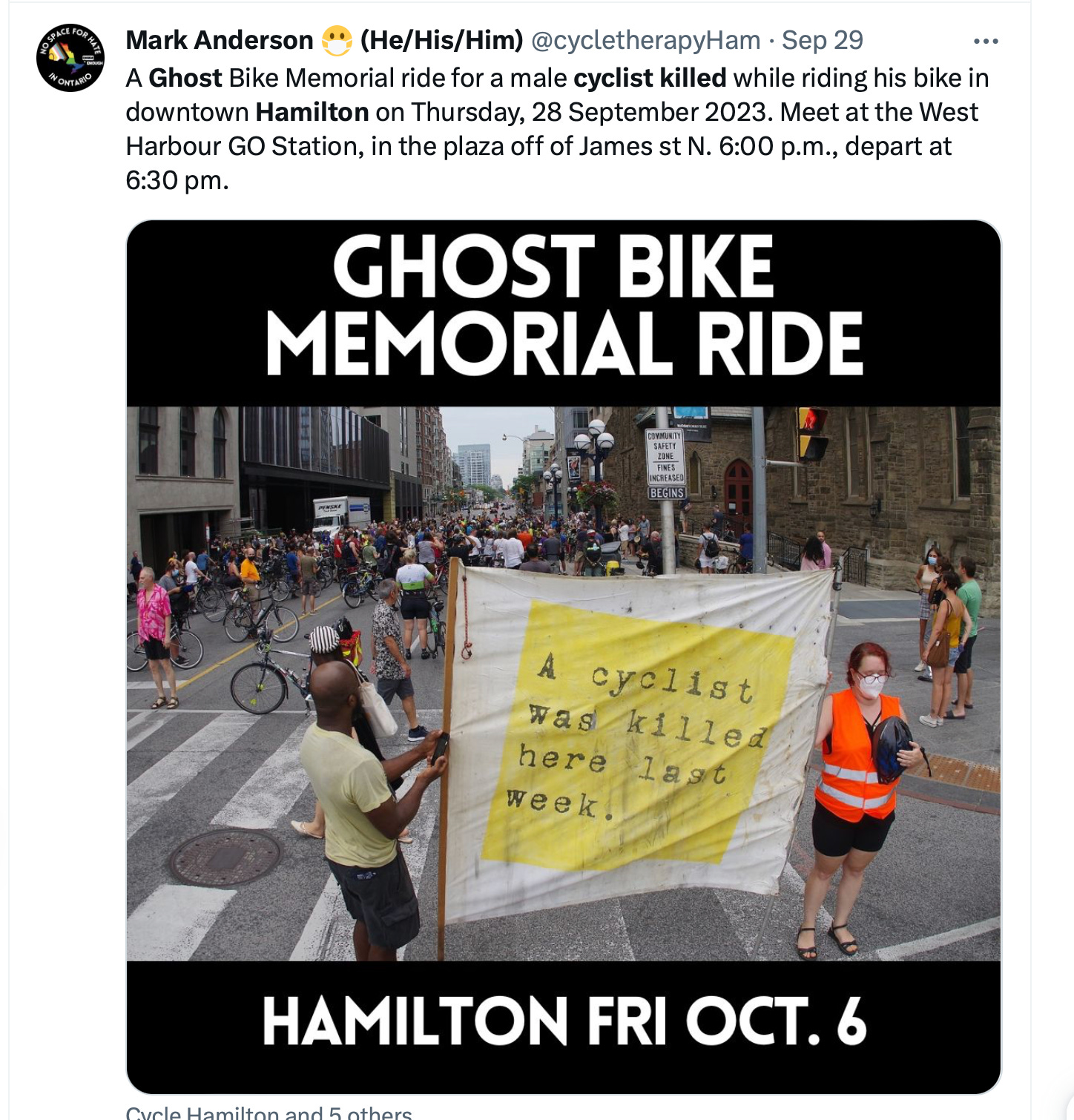
One minor quibble -- we don't talk about diesel engines because here in North America they're every bit as clean as in Europe, if not more so. EPA emissions standards for diesel have been stricter than European ones for a long time, and it wasn't until Euro VI that they caught up.
Lloyd:
Do you mind if I link your site to Angry Bear Blog?